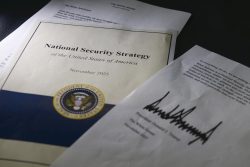16:13 JST, July 10, 2024
If Japan accepts China’s claim that a buoy it placed is meant to observe tsunamis and Tokyo takes no steps regarding the situation, this nation’s maritime interests could be damaged. The Japan Coast Guard and the Self-Defense Forces need to step up their warnings and surveillance.
Last month, a Chinese oceanographic research vessel placed a buoy in the sea area of the Shikoku Basin, a continental shelf on the seafloor south of Shikoku. Valuable mineral resources such as rare metals have been confirmed to be present in the Shikoku Basin.
The JCG spotted the ship heading to the area, and the Japanese government asked China for detailed explanations of the purpose of the sailing and other matters. However, the Chinese side did not respond to the request.
After the buoy was installed, China responded, saying that it was for tsunami observation and did not infringe on Japan’s sovereign rights over the continental shelf.
The U.N. Convention on the Law of the Sea recognizes the sovereign rights of coastal states to explore and develop resources on the seabeds of their continental shelves. If China surveys Japan’s continental shelf, Beijing is obliged to notify Tokyo in advance and obtain its consent.
On the other hand, for the waters above the continental shelf, the coastal state has jurisdiction over marine research if the waters are in its exclusive economic zone (EEZ). On the high seas, however, any nation is allowed to freely survey the area.
The area where the buoy was placed was in the high seas. If China’s claim is true, it does not constitute a violation of international law. However, if the buoy was meant to observe tsunamis as China claimed, why did Beijing ignore Japan’s request for an explanation until it was put in place?
The same oceanographic research vessel placed another buoy within Japan’s EEZ off the Senkaku Islands in July last year. The Japanese government has repeatedly demanded that the buoy be removed, but China has not responded in any way.
In recent years, it has been China’s usual practice to unilaterally develop a sea area and build structures to assert its own interests.
Starting more than 20 years ago, China began developing gas fields near the Japan-China median line in the East China Sea, and it has now installed 18 offshore facilities and is extracting natural gas. In the South China Sea, it has reclaimed reefs one after another and turned them into military outposts.
If the latest buoy is left unattended, the Shikoku Basin could become a disputed sea area as well.
Meanwhile, the foreign and defense ministers of Japan and the Philippines met recently in Manila. With China in mind, they confirmed their policy to cooperate with the United States and Australia to maintain maritime order.
Chinese government vessels have repeatedly sprayed water on and collided with vessels of the Philippines, with which China has a territorial dispute, raising tensions there. Multilateral cooperation to deal with China can be said to be a realistic option.
In addition to providing patrol vessels and other equipment to the Philippines and other members of the Association of Southeast Asian Nations, Japan also should focus on human resource development through such measures as offering technical guidance.
(From The Yomiuri Shimbun, July 10, 2024)
"Editorial & Columns" POPULAR ARTICLE
-

Artificial Intelligence Expands Possibilities for Foreign Language Learners
-

Build Intellectual, Physical Strength, As Well As Communicative Power / Japan Should Move from Beneficiary to Shaper of World Order
-

Global Economy in Turmoil: Prevent Free Trade System from Going Adrift / Risks to Financial Markets Must Be Heeded
-

Japan-China Strain Set to Persist as Beijing Officials Self-Interestedly Bash Tokyo; Takaichi Unlikely to Back Down
-

Elderly People Living Alone: What Should be Done to Ensure Living with Peace of Mind until the End?
JN ACCESS RANKING
-

Japan Govt Adopts Measures to Curb Mega Solar Power Plant Projects Amid Environmental Concerns
-

Core Inflation in Tokyo Slows in December but Stays above BOJ Target
-

Major Japan Firms’ Average Winter Bonus Tops ¥1 Mil.
-

Bank of Japan Considered U.S. Tariffs, Coming Shunto Wage Hike Talks in Its Decision to Raise Interest Rates
-

Tokyo Zoo Wolf Believed to Have Used Vegetation Growing on Wall to Climb, Escape; Animal Living Happily after Recapture




























